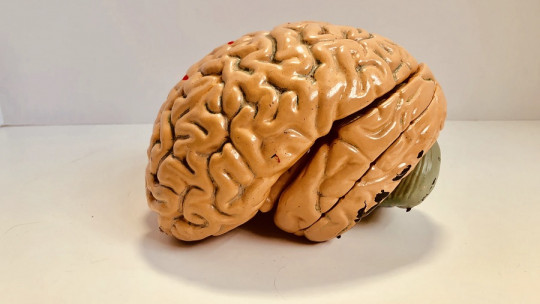Anxiety and other emotions do not manifest only in our minds. In addition to catastrophic thoughts and emotional discomfort, anxiety makes us feel tics, breathe faster, speeds up our heart and even causes indigestion.
There are three types of responses that manifest with emotions: cognitive, behavioral and physiological. These three dimensions are related to anxiety, but they do not have to go hand in hand.
The triple response system is a classic model which places emphasis on these three dimensions related to emotions, paying attention to the patient’s behavior and organism without ignoring their processes at a psychological level. Let’s look at it in more detail below.
What is the triple response system?
The triple response system is a three-dimensional theory of anxiety developed by psychologist Peter Lang in 1968. This theory, which is also called Lang’s model in honor of its author, is three-dimensional in that it evaluates three types of responses related to anxiety: cognitive, behavioral and physiological. Before this model was conceptualized, it was believed that emotions and other psychological processes were always internal in nature, that is, they only occurred mentally or cognitively.
However, with the appearance of the Lang model The idea was spreading that to approach any problem, especially anxiety disorders, both the internal aspects and the patient’s thinking must be evaluated. , in addition to what your body reflects both physiologically and behaviorally, this being the fundamental idea of the triple response system. Furthermore, it is argued that, although related, some responses do not have to go hand in hand with the others, that is, the cognitive, behavioral and physiological spheres do not manifest with the same intensity.
Main premise of the model
The triple response system theory has its origins in Peter Lang’s observations when he treated patients with phobias using systematic desensitization. This psychologist observed that his patients’ responses contradicted the unidimensional model of emotion , a theoretical assumption that was widespread in the 1960s. The unidimensional model maintained that cognitive, behavioral, and physiological measures were correlated in emotional problems such as anxiety and that if a change occurs in one of these measures, it will also occur in the other two.
However, Lang’s clinical experience suggested the opposite, since he saw that there were certain discrepancies between these three types of response when presenting a case of anxiety and, also, in other psychological problems related to emotions. A triple response system was manifested, that is, the cognitive, physiological and behavioral components of the patient did not have to correlate with each other, although they did have to be related to the main problem of anxiety. That is, there could be different intensity in the manifestation of responses.
System Components
As we have indicated, Lang’s model maintains that three different levels of responses can be observed when faced with anxiety: cognitive, physiological and motor. These three typologies do not necessarily have to be connected or interrelated. and, at the same time, its intensity, perception, duration and moment of appearance may vary depending on the patient. This is due to the presence and influence of stimuli, both internal and external to the patient, in addition to the type of stimulus that triggers the response and, naturally, the individual’s own characteristics (individual differences).
1. Cognitive response
Within Lang’s model we speak of a cognitive response to the set of thoughts and feelings that appear in the individual’s mind in the presence of the stimulus that causes anxiety. For the feelings part we can talk about fear, worry or trepidation. As for the thoughts part, to mention a few, we have exaggerate the magnitude of the perceived threat, imagine the worst possible scenarios, anticipate that something catastrophic is going to happen…
All of this can lead to feelings such as insecurity, a feeling of loss of control, negative thoughts about oneself such as low self-esteem and reduced self-concept, inability to make decisions, problems concentrating and fear of others noticing that you are feeling deep discomfort or that detect that one suffers from anxiety.
2. Motor or behavioral response
The motor or behavioral response refers to the movements or actions that the patient performs when they feel anxious. This type of response is divided into two types: direct responses and indirect responses.
2.1. direct answers
We refer to direct motor responses as those that are directly observable but involuntary. In this type of response we find tremors, stuttering, tics, general motor restlessness…
In addition, a lack of motor precision and problems with learning and executing complex tasks may occur. These motor signs can be so disruptive that they can affect processes as seemingly unrelated as memory and prescriptive discrimination.
2.2. indirect answers
The indirect answers are the escape or avoidance behaviors carried out by the patient, which have some voluntary control although not absolute. These types of behaviors usually occur in response to the other two components of the triple response system, that is, cognitions (thoughts and feelings) and physiological changes.
This typology of behavioral responses includes behaviors that in the short or long term can damage the individual’s health or lead to various problems: alcohol abuse, smoking, use of prohibited substances, eating large amounts of food…
3. Physiological responses
Physiological responses are those that They appear when there is some increase in the activity of the autonomic nervous system and the somatic nervous system. , as well as in combination with the endocrine responses of the Central Nervous System. These systems are involved in the responses that occur at an organic level to a stimulus that causes anxiety, such as increased cardiovascular activity, muscle tension, sweating, dry mouth, interruption of digestion…
The patient does not have to manifest all these physiological signs when a stimulus appears that causes anxiety, but it is worth saying that if one occurs and persists for a long time, it can have a negative impact on the physical health of the person affected. For example, being constantly anxious and manifesting your physiological responses for a long time can cause problems such as insomnia, gastrointestinal discomfort, muscle contractures, erectile dysfunction, tachycardia…
Usefulness in the diagnosis of anxiety disorders
The triple response system model is very useful with respect to the diagnosis of anxiety disorders since, taking into account that the cognitive, motor and physiological aspects may not manifest with the same intensity when an anxiety-producing stimulus appears, it is possible to obtain a more precise differential diagnosis and apply more appropriate therapeutic techniques for the specific case.
One of the main problems with verbal reports in the form of an interview is that they focus more on the patient’s cognitive and purely emotional area. , that is, they are asked how they feel, something that is necessary to know, but how the patient behaves in a purely anxiety-inducing situation is not evaluated, causing them to manifest responses of the three types. In order to know how to help the patient, it is necessary to go beyond the internal, evaluating both his organic response and his behavior when faced with the stimulus, aspects that not even the patient himself may be aware that he performs.
With the triple response system model we understand the need to provoke, in a controlled context, the responses associated with anxiety. For this reason, Peter Lang himself often used stimuli such as photographs, words and sounds with a positive, negative and neutral component, stimuli that aroused some type of emotion in the patient. These stimuli have their own system, the International Affective Picture System (IAPS) and the International Affective Sound System (IADS).
This same strategy is today essential to detect and treat anxiety problems such as, for example, phobias. Knowing that a patient feels anxious about a phobic stimulus is necessary to be able to diagnose them as a patient with a phobia, but it is of little use if we do not go further and try to find out how they respond to what they say they feel anxious about. For example, to help a patient with arachnophobia you can present images of spiders, record how they behave, what they feel and also what physiological response they manifest.









